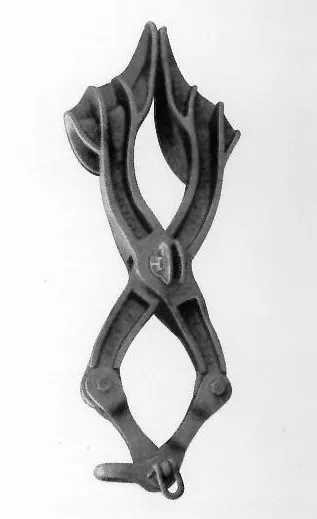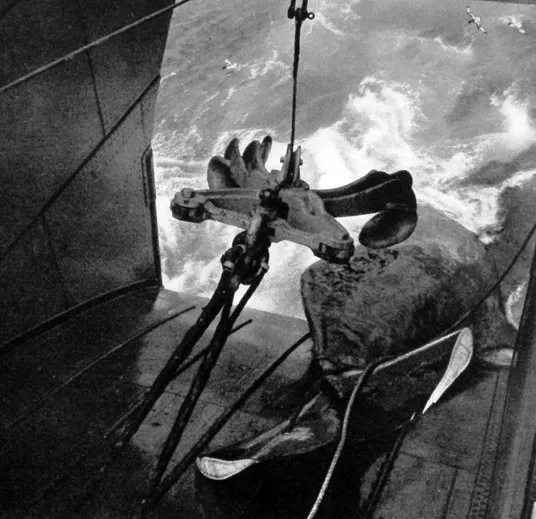Hval Kla or "grab"
Whales and
Whaling pictures
Next
Previous
Back to gallery
Back to whale and whaling
thumbnails



The Norwegian tail grab or hval kla is another of the inventions that made industrial whaling using factory ships and slipways on those ships possible.
A dead whale could be taken to the slipway and a line passed around it to start the process of winching it up the slipway. But such a great weight and relatively thin lines could cause problems, not the least of which was passing a strong enough line around the whale to haul it up the slipway and then to be be easily removed once on deck.
This claw was large enough and strong enough (weighing several tons itself) to be able to "grab" hold of the tail of the whale at the narrowest part or the "small" fairly easily and haul it onto the flensing deck. It could also be relatively easily taken off again once the whale was in place, ready for the next one. No man had to enter the dangerous zone of the slip way and ropes under great strain need not be handled to haul the whale except from a distance.
The size of the grab can be seen by comparison with the man in the last picture. Operating this contraption was in itself a skilled job with the ship and whale moving with the swell and waves and the grab itself suspended above the whale and might be swinging in a rhythm of its own. At the crucial point, the grab fully opened would be dropped onto the whale and with a crash that could be heard throughout the whole ship would grab the whale's tail, the winch attached to the rear end would pull and the jaws would close together to bring the whale aboard.
Note in these pictures how the end parts of the flukes of the whale have been removed, this was done by the catcher boats immediately after the capture of the whale. It is sometimes said that it was done superstitiously to prevent a dead whale that had been inflated and buoyed and left for some time before transport to the factory ship from somehow swimming many miles away. It also had a much more practical use in that whales were towed backwards to the factory ship by a rope placed around the small, and intact flukes would act as a brake so slowing this passage down. It could also be used as a code to signify which boat killed the whale or signify how many harpoons had been used and needed to be retrieved. The flukes were not always cut in this manner.
